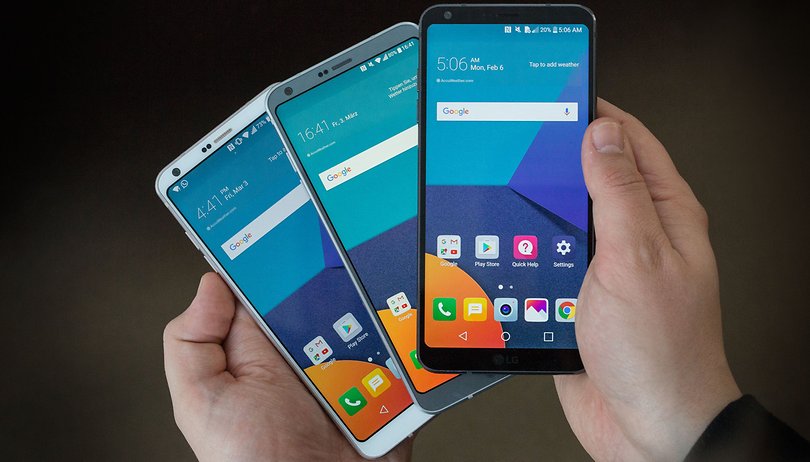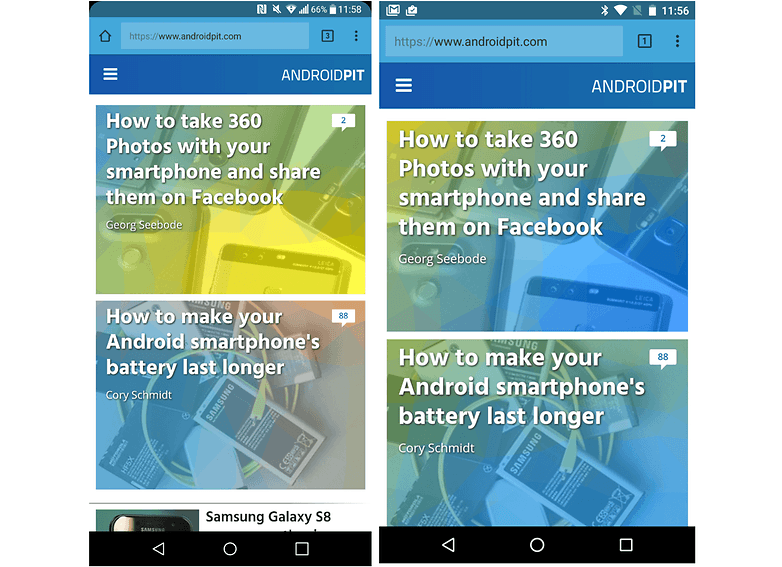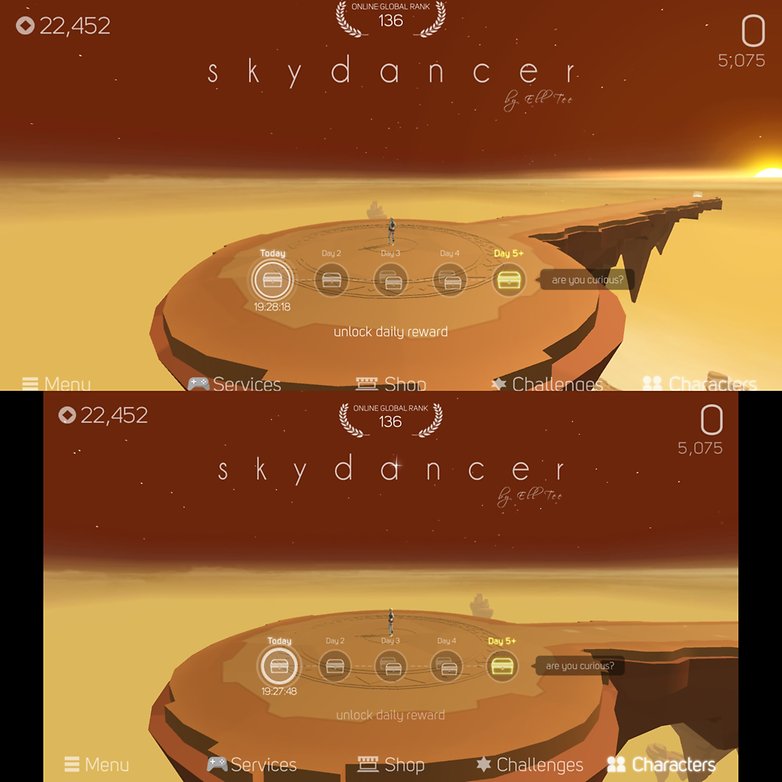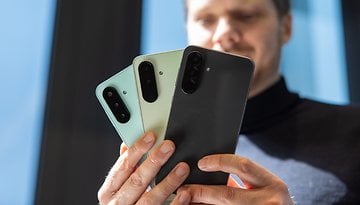Display formats: when 5.7 inches isn't the same as 5.7 inches


The display diagonal has always been the established, standard method for specifying the size of a smartphone's display. What can often be overlooked is that if two devices have a different aspect ratio, the sizes aren't directly comparable.
Currently, the LG G6 is responsible for this discussion, and the Galaxy S8 will intensify it: how can the size of one display be compared against another? The diagonal is not sufficient. The reason for this is mathematics – more precisely, geometry.
The LG G6 has an aspect ratio of 18:9 (or 2:1) and a diagonal of 5.7 inches. Because of the form factor, this means that, in comparison with another 5.7-inch display: it’s narrower, but taller. Nevertheless, there is less space on the display. In comparison with the Nexus 6P, you can see: the 16:9 Nexus has a display area of 89.6 cm² while that of the LG G6 is only 83.8 cm². So, we are dealing with a difference of about 6 cm² (the rounded display corners of the G6 are not taken into consideration).

We face a very similar problem with the Galaxy S8 and the S8 Plus: both will probably have the 1,440 x 2,960 resolution, which gives an aspect ratio of 2.06:1 (or however Samsung will refer to it).
An example illustrates the situation: if the Galaxy S8 appears with the 16:9 format, the display would be 92.74 cm² in size. However, because it will have a different aspect ratio, the display is expected to be only 85.38 cm². For comparison, the Galaxy S7 Edge presents a display area that is 83.39 cm².
Narrower, but taller: what difference does it make?
The new form factor requires a tradeoff, especially for games, because they can’t switch to the native resolution of the display. Either there are black bars at the edge, or the content at the top and bottom is cut off. To demonstrate this, here is a screenshot from Sky Dancer:

In everyday use, on the other hand, the taller display results in more content being visible. So, on a web page, there are more lines displayed in articles and a messenger can show more messages. It’s also clear that this can differ from app to app. Thanks to Nougat’s standard ability to adjust the display size of icons and text, the effect can also be slightly modified.
Display area of selected smartphones
| Smartphone | Resolution | Aspect ratio | Diagonal | Width | Height | Area |
|---|---|---|---|---|---|---|
| LG G6 | 1,440 x 2,880 | 2:1 | 5.7 in | 6.47 cm | 12.95 cm | 83.84 cm² |
| LG G5 | 1,440 x 2,560 | 16:9 | 5.3 in | 6.6 cm | 11.73 cm | 77.44 cm² |
| Nexus 6P | 1,440 x 2,560 | 16:9 | 5.7 in | 7.1 cm | 12.62 cm | 89.57 cm² |
| Galaxy S7 | 1,440 x 2,560 | 16:9 | 5.1 in | 6.35 cm | 11.29 cm | 71.7 cm² |
| Galaxy S7 Edge | 1,440 x 2,560 | 16:9 | 5.5 in | 6.85 cm | 12.18 cm | 83.39 cm² |
| Galaxy S8 (rumored) | 1,440 x 2,960 | 2.06:1 | 5.8 in | 6.44 cm | 13.25 cm | 85.38 cm² |
| Galaxy S8 Plus (rumored) | 1,440 x 2,960 | 2.06:1 | 6.2 in | 6.89 cm | 14.16 cm | 97.56 cm² |
| Comparison: 5.8 in, 16:9 | 1,440 x 2,560 | 16:9 | 5.8 in | 7.22 cm | 12.84 cm | 92.74 cm² |
| Comparison: 6.2 in, 16:9 | 1,440 x 2,560 | 16:9 | 6.2 in | 7.72 cm | 13.73 cm | 105.97 cm² |
| Lenovo Phab2 Pro | 1,440 x 2,560 | 16:9 | 6.4 in | 7.97 cm | 14.17 cm | 112.92 cm² |
To explain: the data in the table were calculated with the DPI Calculator on sven.de. We assume that the pixels are square. The calculated results are from the width and height data. Actual values for individual devices may differ slightly.
Conclusion: a display diagonal is not enough for size comparison
With the new generation of smartphones from LG and Samsung, classic ideas about the size of smartphone displays have been shaken: a 5.7-inch smartphone may not be comparable to another 5.7-inch smartphone, precisely because the aspect ratios require very different housing concepts. This is the case with the LG G6: despite the display, it is quite compact and almost the same size as a Nexus 5X with a 5.2-inch display (screenshot comparison pictured above).
More data points are necessary in order to compare different displays. Display area is a good start, especially since the smallest differences become apparent. However, this too, is only a guideline. So, the appeal of the classic info about the diagonal size is that it intuitively gives you a sense of its size compared to others and the overall size of a smartphone – this is hardly possible with the addition of data points about the area.
Is your smartphone's display large enough for you to read comfortably? What do you think of the LG G6's display?




















I found the article interesting and had not even considered thinking about it this way. I say that cause I saw the G6 and thought that I really want this phone but now I'm questioning that. If the screen is taller then one handed use may not work so well if you need to access both there very top and bottom.
Thanks for providing this information for us to think about.
TV sets have multiple aspect settings to deal with the variety of formats used by channels - sometimes the news crawler or sports score is cut off or a screen setting that stretches the edges is needed to avoid cropping. Generally people who like one-handed operation will like the new narrower phones regardless of screen area, but maybe something in the OS could be done to make software fit better. (Personally I don't want bigger than my current 5" ZTE, and would even go back to a smaller more pocketable size.)
Yes it's nice to know such a thing...
Also, this brings us to the s8 battery, which is same capacity lile one on regular s7, but still will have to power the screen little bigger than the one on s7edge.
No matter how SoC effective will be, i don't see how it could bring same battery life as s7 (which already was less than a good, especially Snapdragon version of drvice)... Without underscaling screen resolution and brightnes...
But i did not had SD screen on my phone since s3, so i really don't find interesting to give 850€ for a something that is not better than 5 years old device.
Nice article, pointing out that you don't get something for nothing, especially with these very tall, skinny displays. They also make it very awkward to reach the top of the display.
5.7" of tall and skinny becomes 5.2" of usable display once you add the obligatory black sidebars. Lol. ?
I found very hard to reach whole surface of my s7 with one hand, as i used to do. ..yes,we have 2 hans, but you can't always use both on a phone, and why would you!?
So, i totally agree with you... But i guess that they will fin a way to make it easier for one hand usage with help of gestures.
Nice information ?
Good points. Now write an addendum for the 4x3 lunacy in tablets.
What lunacy? For once I must thank Apple that popularized the format, because I would never buy a "Wide-screen" tablet.
nice article. I didn't realize the real estate (square inches/cm) difference between different ratios